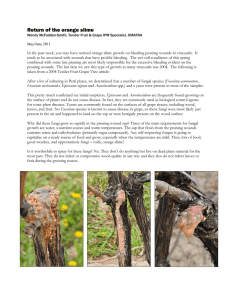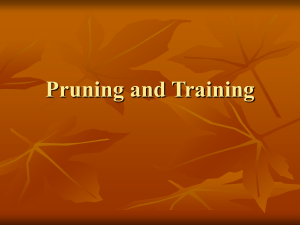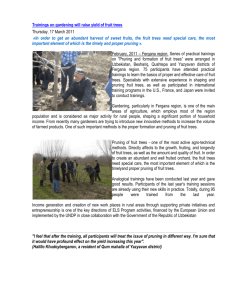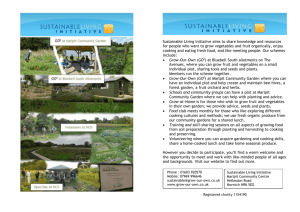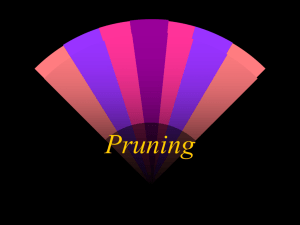Beautiful and Delicious:
advertisement
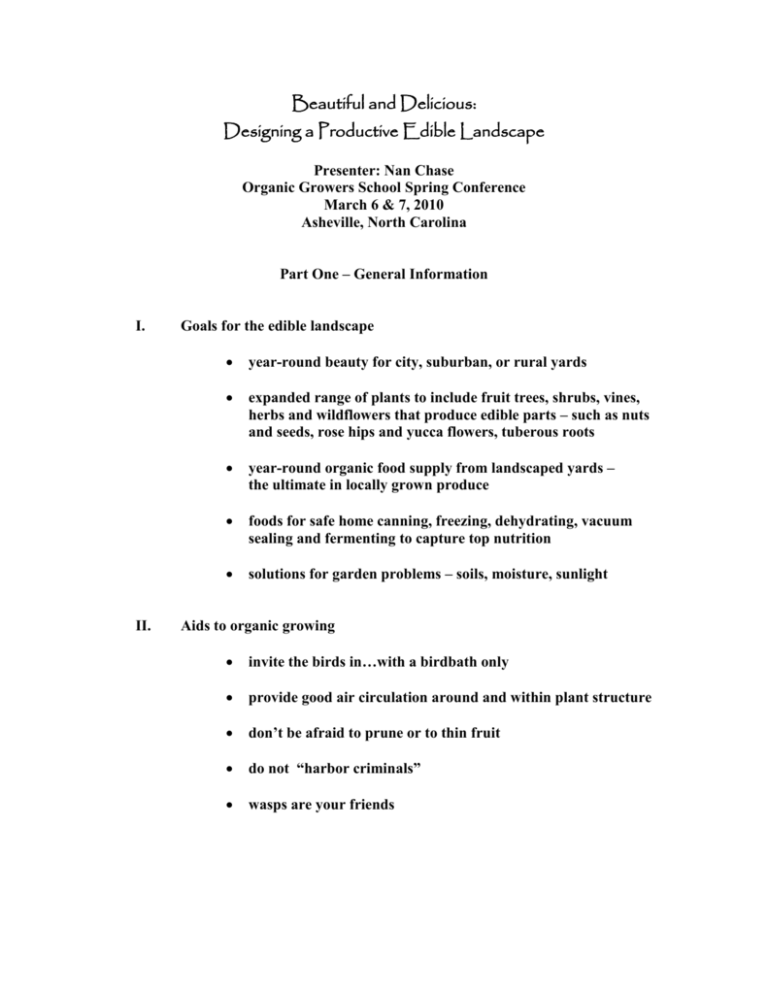
Beautiful and Delicious: Designing a Productive Edible Landscape Presenter: Nan Chase Organic Growers School Spring Conference March 6 & 7, 2010 Asheville, North Carolina Part One – General Information I. II. Goals for the edible landscape year-round beauty for city, suburban, or rural yards expanded range of plants to include fruit trees, shrubs, vines, herbs and wildflowers that produce edible parts – such as nuts and seeds, rose hips and yucca flowers, tuberous roots year-round organic food supply from landscaped yards – the ultimate in locally grown produce foods for safe home canning, freezing, dehydrating, vacuum sealing and fermenting to capture top nutrition solutions for garden problems – soils, moisture, sunlight Aids to organic growing invite the birds in…with a birdbath only provide good air circulation around and within plant structure don’t be afraid to prune or to thin fruit do not “harbor criminals” wasps are your friends III. Tips for more enjoyable gardening compost any way you like don’t stress about hardiness zones take advantage of micro-climates in the yard site plants from inside the home as well as outdoors don’t be afraid to move plants, as not everything lives or thrives where you think it might Part Two – Plants for Southeastern Gardeners I. Confidence boosters, great for beginners crabapple – pest-free, small tree needs little pruning, bears early and reliably for juice, try delicious Callaway Crab sunflowers – drought-loving, thrive in poor soil, annual and perennial varieties include Jerusalem artichoke (sunchoke), inviting to birds herbs – high landscape and culinary value, low maintenance, varieties for every garden condition apples – varieties and sizes for every garden condition, vigorous and prolific, long-living, “forgiving” yucca – thrives in thin, dry soils, carefree and easy to divide, dramatic edible flowers, beautiful in snow, delicious root native roses -- hardy, fragrant, beautiful, help pollination throughout the garden, ripe “hips” high in vitamin C II. III. IV. Middle of the pack, need a little love highbush blueberries – require light pruning, proper soil and drainage, netting to protect fruit, planting for pollination grapes – require pruning to encourage fruiting, proper soil and drainage, possible pest or disease remediation filbert nut (hazelnut) – siting and pruning important, may require netting or cages to protect nuts pear trees – require patience, light pruning and ample sun, may require fruit thinning pawpaw trees – require patience, siting in light shade mint – requires containment and thinning to prevent running For experienced gardeners, high rewards peach trees – require skilled pruning annually, susceptible to pests and diseases, short life span, a real “piece of work” but beautiful and prolific when properly sited and maintained kiwi vine – highly nutritious but fussy as heck, need male and female plants for fruit production bay tree – susceptible to cold and damp and sunburn citrus trees – require skilled container culture if grown in any zone with frost, require feeding, patience and skilled pruning fig – requires hard root pruning or containment if space is tight, requires skilled pruning to encourage fruiting, may require winter protection by wrapping walnut (black or white) – require patience, space; nut processing difficult, these don’t “grow well with others” Spectacular greens for health and garden allure asparagus (near chili peppers for a cool-hot look) globe artichoke (tall, full foliage and dramatic globes) Swiss chard and Savoy cabbage (plant just a few at a time) Part Three – Preserving the Bounty I. Enjoying your organic produce all year canning – stable long-term storage for large quantities of fruits, juices, sauces, jams and jellies, pickles; requires substantial one-time investment for equipment, cooking process takes time freezing – easy for small quantities of dry crops, retains nutrition, low cost; important to label batches and rotate stock, and risk of power failure dehydrating -- easy for small quantities of many crops, safe and fun for children, use throughout growing season; low cost vacuum sealing -- fast and easy, use in conjunction with freezing or dehydrating to prolong shelf life; requires modest one-time investment pressing – produces pure fruit juice from orchard crops; large one-time investment for long-lasting equipment; juice is stabilized by pasteurization and canning fermentation – stable and delightful long-term storage for fruits, vegetables, herbs, flowers; modest one-time investment for equipment, low cost, low energy process Part Four – Resources USDA Cooperative Extension System www.csrees.usda.gov//Extension/ National Center for Home Food Preservation, www.uga.edu/nchfp/ Dehydrators, NESCO/American Harvest www.nesco.com Vacuum sealer, Frisper by Oliso, www.oliso.com Plant sources are endless. I recommend One Green World in Oregon – they have a useful catalog and ship plants carefully, www.onegreenworld.com Consider joining or even starting a garden club! www.cgamerica.org ###

